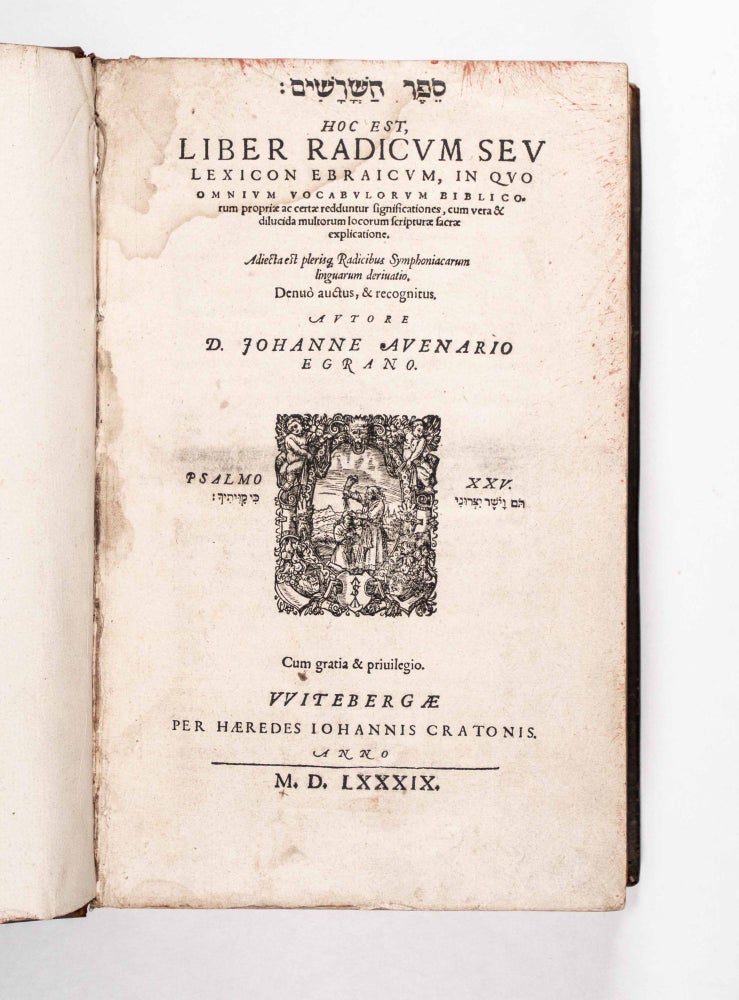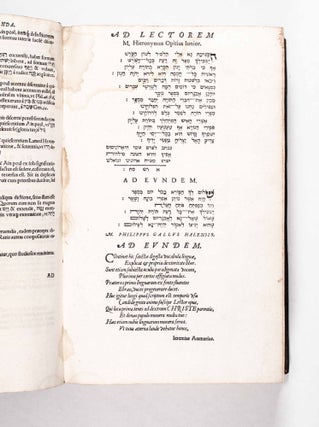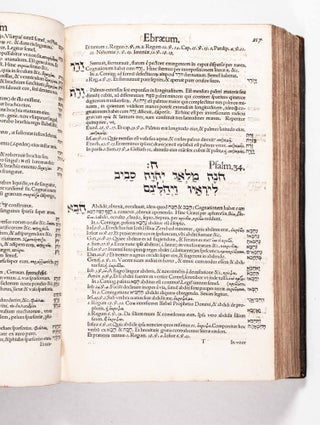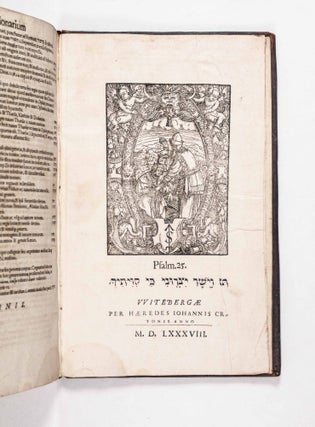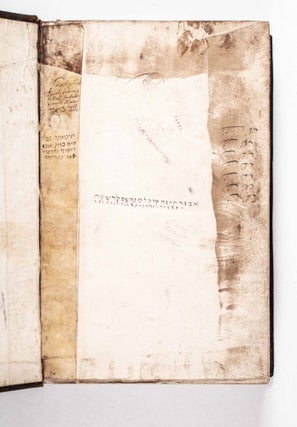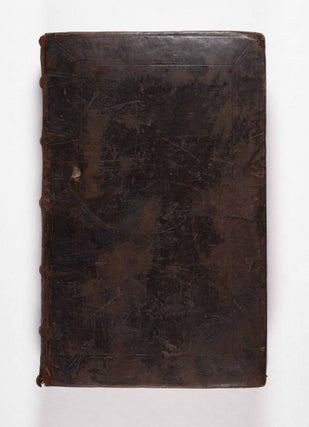Sefer ha-shorashim: hoc est, Liber radicum, seu Lexicon Ebraicum (A Book of Roots, or a Hebrew Lexicon)
Wittenberg: The Heirs of Johann Krafft the Elder, 1589. Second revised. Hardcover. Folio. [reversed parentheses]8 A-4B6 4C10 (= 444 leaves; blank 4C10). [16], 860 [i.e., 868; various error in pagination], [2, colophon (recto)], [2, blank]pp. Woodcut printer’s device at title, a larger half-page version appearing as a vignette at the colophon; woodcut lettrines. Printed marginalia (noting various derivations of the root under notice). Occasional quotations in Greek and German. Contemporary calf, ruled in blind (lightly scuffed); contemporary manuscript paper spine label (partially perished). Contemporary bifoliate vellum manuscript strips, apparently of a student at Cambridge, bound into both joints. Tightly trimmed, very occasionally touching a letter in the printed marginalia; paper fault at 2P1 resulting in the loss of two or three letters. Clean text throughout; complete with final blank.
Second, revised edition (variant with title dated 1589; colophon 1588) of this Hebrew lexicon organized by triliteral roots. Each alphabetic section is headed by a biblical passage beginning with that letter. The author's approach is idiosyncratic, and "proceeds on the principle that the Hebrew, being the primitive language, from which all others have been derived, may be explained by the aid of the Greek, Latin, German, [and] English" (Jenks). "Hoefer notes that the work was highly praised by the celebrated classical scholar Isaac Casaubon, who also took a great interest in Hebraic studies. The protestant theologian and Hebraist Johann Habermann (Avenarius; 1516-1590) was professor of theology at Jena, and archbishop of Zeitz. Some of his works were quite popular: his celebrated prayerbook went through several edition between 1578 and 1610; and his Hebrew Grammar was printed at least five times between 1562 and 1597. As with many of his Lutheran brethren, Habermann sought high-level patronage for his Hebraica, dedicating the present volume to duke August of Saxony (1526-1586). The present work may have been intended for the export market as about as many copies are presently located in UK libraries as are to be found in Germany.
Provenance: armorial bookplate of George Betts “of Wortham in Suffolk” mounted to front paste-down; library shelf code [?] in manuscript at front paste-down. A most interesting annotation appears on a vellum insert at the front hinge in which an eager student at the University of Cambridge has noted in Latin how he came to acquire the book, and immediately beneath has playfully transliterated into Hebrew characters “Timothy Nob his book anno domini nostri...”. Good+. Item #48880
References: Adams A-2306. Hoefer 3:826. Jenks, Supplement to the Comprehensive Commentary on the Holy Bible (1838). Steinschneider, Bibl. Handbuch, 150. VD16 H51. Zaunmüller 178. Not in Vancil (Cordell Collection).
Price: $2,000.00

